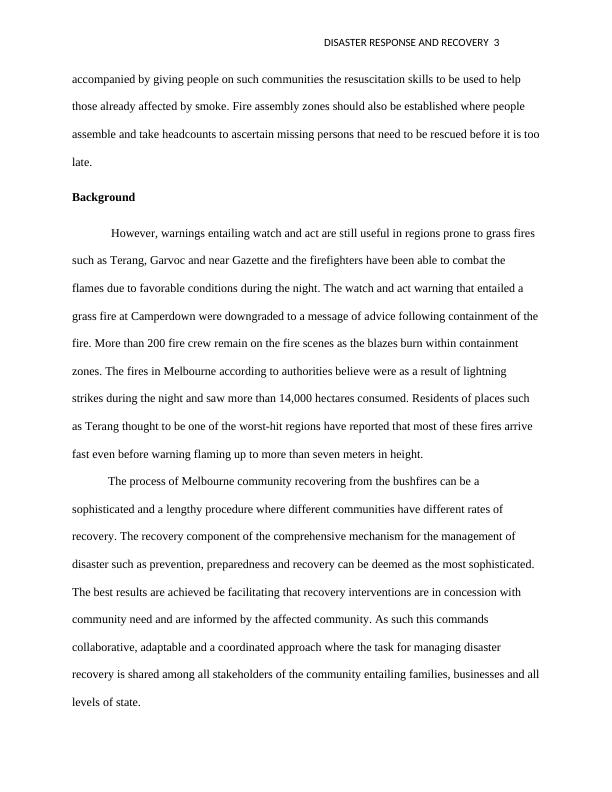Disaster Response and Recovery: Recommendations for Bushfire Victims in Melbourne
16 Pages4262 Words333 Views
Added on 2023-06-05
About This Document
This report provides recommendations for disaster response and recovery plan for bushfire victims in Melbourne. It covers evacuating and reconstructing houses, providing temporary shelter and food, and medical assistance. The report also discusses the concept of mass casualty incident and principles that guide the management of recovery phase. The key strategies for rehabilitation of built structures, employment and livelihoods, and primary infrastructure and lifeline facilities are also discussed.
Disaster Response and Recovery: Recommendations for Bushfire Victims in Melbourne
Added on 2023-06-05
ShareRelated Documents
End of preview
Want to access all the pages? Upload your documents or become a member.
Building in Bushfire Prone Areas
|7
|1491
|237
Building in Bushfire Prone Areas
|7
|1513
|103
Community Recovery Plan for Bushfire in Victoria, Australia
|47
|3982
|336
Impact of Natural Disasters on Health: A Case Study of Black Saturday Bushfire in Victoria
|11
|2609
|416
International Tourism and Hospitality: Impact of the Natural Disaster
|6
|1135
|28




